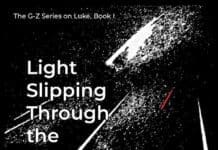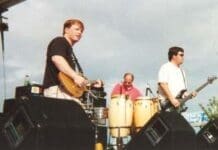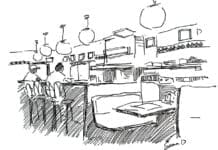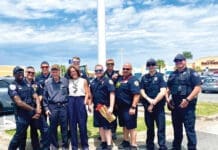
By Michael Yoder, Retired FBI Criminal Profiler
Homicide crime scene analysis is both an art and a science. It takes a rare and well-trained individual who can look at a never-seen-before collection of objects and view an area macroscopically (big picture) and microscopically (too small for the naked eye to see), to include looking at all items that are in place and to discern what is NOT in place but should be. Careful observations help create a narrative of what happened–not impossible, but very difficult. To make it even more challenging, the investigator usually only has one chance at collecting evidence. Once the crime scene is released, it no longer holds any evidentiary value.
A good homicide investigator wants to be on scene as soon as possible, so they can see every item in the scene. They will survey the area and look at items such as furniture, displayed items, clothes, and the typical items that personalize the space. They will look at the victim’s body for position, wounds, weapons, and signs of struggle. They do this initial survey while minimizing contamination of the crime scene. For an experienced investigator, they can start drawing a hypothesis of what happened.
Either the homicide investigator or a trained crime scene specialist will view the scene from a microscopic perspective to gather potential evidence. Microscopic evidence may consist of hairs, fibers, fingerprints and DNA. Due to the enormous expense of laboratory testing, each potential piece of evidence must be collected with care and foresight. The critical choice of where they collect DNA is the “art” of evidence collecting. It depends on the scene and the acts committed. It depends on the gut instinct of the collector. The evidence collector must know what to collect and where to collect it, without really knowing what exactly happened at the scene.
A living room or a bedroom, for example, usually has normal items that personalize it for the owner. Furniture and display items are common. An upturned piece of furniture or broken glass may suggest a struggle—Blood on the floor or walls may indicate movement through various rooms. Any items out of place or not properly displayed becomes a question of why it became that way. These visible traits of the crime scene will be mentally captured in the initial hypothesis as the investigator seeks to create a running narrative.
The final piece to consider is what is missing or has moved unexpectedly. Is there an imprint that show something was at that exact location earlier? Does the absence look out of place? What items are missing or moved? Why? Is it important to the hypothesis? Is the missing piece a weapon? A computer? Or something seemingly inconsequential like a heavy candlestick in an unlikely place. If the missing item is important to the murderer, knowing what is missing may be an important aspect of the crime.
Finally, murderers may try to “stage” a crime scene to throw off the true analysis. By doing so, they hope to misdirect the investigators toward an innocent party. Not knowing the difference between a true crime scene and a staged crime scene can have severe consequences. An experienced investigator will usually spot the staged crime scene as they continue their investigation. Ultimately, the step-by-step narrative of what happened has to be supported by the evidence collected at the scene, the interviews conducted of potential suspects and witnesses and the facts of the investigation. Once aligned, they will point to the perpetrator.
If you have an interest in true crime and want to know how to become a sleuth, please join our Facebook page at Destin True Crime Club. We meet once a month to discuss our ongoing research of an actual cold case and brainstorm ways to continue our research. This is a serious, but fun, group of people who have the passion to solve cases. Email me at myoder0361@gmail.com with questions about our club or to request a talk on violent crime issues.





























































